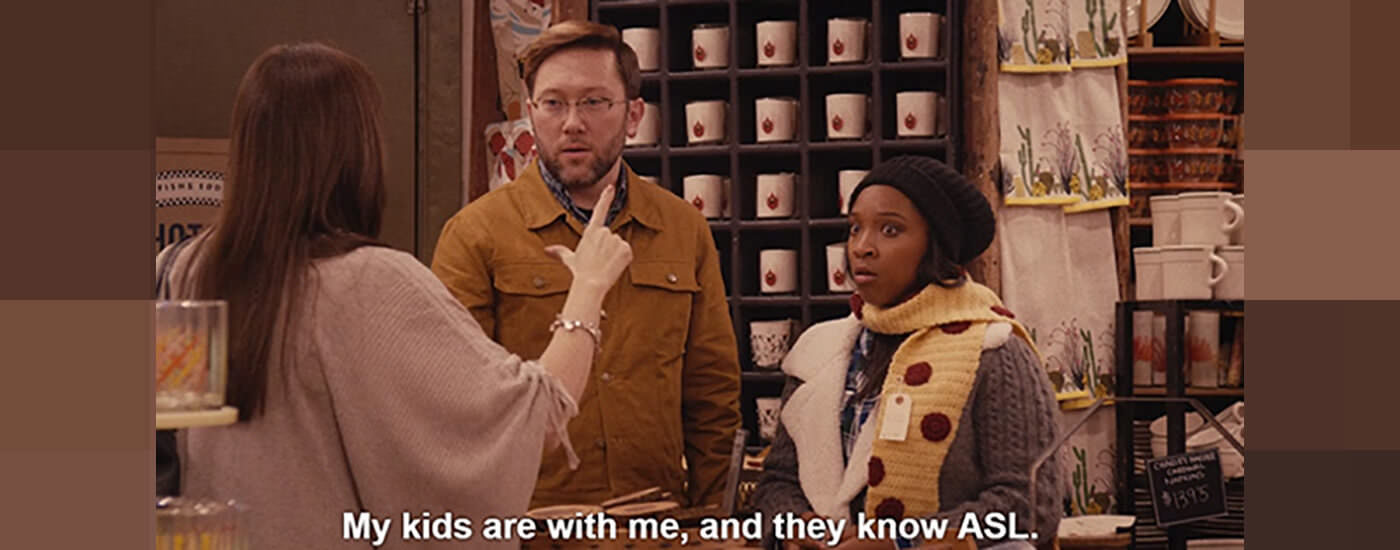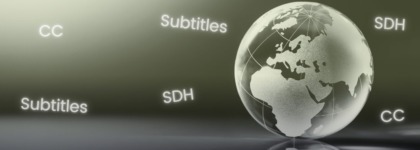‘Master of None’ Highlights Deaf Culture & Demonstrates Importance of Visual Aid
Updated: March 2, 2021
Considering the overwhelming number of popular TV shows on streaming services like Netflix and Hulu (not to mention traditional cable), it’s hard to imagine why we don’t see more variety in our protagonists — especially when it comes to Deaf people.
That’s partly why comedian Aziz Ansari and Alan Yang’s hit Netflix original, Master of None, is getting so much attention right now.
For the uninitiated, Master of None follows the story of Ansari’s character, Dev Shah, who attempts to navigate his life, his job as an actor in New York City, and a constantly changing millennial world defined by emerging technologies like smartphones, social media, and swipe-based dating apps.
The Episode that Made Us Check the Audio
In an episode entitled, “New York, I Love You,” the sixth episode of the second and current season, the show temporarily breaks from the main storyline and instead offers three vignettes depicting the lives of new characters working and living in New York City. One of these mini-episodes features a Deaf woman named Maya, played by Deaf actress, Treshelle Edmond.
What makes this particular moment in TV history so memorable and engaging is the immersion aspect. The entire segment of Maya’s story is made silent — no speech, no background music, no sound whatsoever — in an attempt to mimic the experience of being deaf for those who are hearing. Viewers are forced to pay attention to the subtitles when actors communicate in sign language so they can understand the dialogue. And when hearing people try to communicate with our protagonist, there are no words on the screen to help you out (so, essentially, exactly what Deaf viewers have to go through when there are no captions available to read).
In one instance, for example, Maya is texting her boyfriend at a cash register behind the counter of the bodega she works at. A male customer then approaches the register to pay for his goods (it’s a Lunchables meal) and tries to speak to her in English. Maya then points to her ear and signs to show that she’s Deaf. The customer smiles, nods his head, and then attempts to flirt with her in sign language and asks her out on a date. The results are hilarious. Maya shows him her engagement ring, uses her phone to type out a message that says, “You just asked me if you and I are socks,” and shows it to the customer who then walks away with a slight look of embarrassment.
At the end of Maya’s segment, she and her husband are shopping in what appears to be a Home Goods, or some other kind of decor/interior design store. After some time, Maya initiates a conversation with her husband about some of their intimacy problems and things escalate into an intense argument with a lot of colorful language used. [Reminder, this is all happening in ASL with subtitles.]
The couple assumes they are having this argument “in private.” But all of a sudden, the pair is interrupted by a very angry mother who begins accosting them both (in ASL) for sharing their vulgar conversation with “the entire world,” and adding, “my kids are with me and they know ASL.” The kids are then shown running around the store signing the naughty words they saw the couple making earlier.
Role Reversal: An Effective Strategy for Accessible Media Advocacy
Non-signing hearing people wouldn’t be able to understand the episode at all if there weren’t subtitles to help.
After watching the scene where the mother scolds the couple for using dirty language in public, as any concerned mother might around her children, here’s something one might consider: Imagine a world in which the roles are reversed and most humans communicate primarily through sign language while a smaller portion of us use spoken language instead. How would that change the way we think about “accessible media”? Would all videos be subtitled so that hearing viewers can understand the dialogue, or would we have to ask for them?
The combination of silence with sign language dialogue that Ansari and Yang employ in “New York, I Love You” is a powerful, thought-provoking device for drawing awareness to the fact that not everyone can hear. Many of us need a visual aid to allow for an equivalent experience in all aspects of life, including participating in the same media of entertainment that everyone else enjoys.
Additionally, this brief, yet powerfully empathetic portrayal of Maya’s character in Master of None shows us that rather than merely serving to add diversity to a cast, or existing as a source of drama and intrigue by stressing the fact that they cannot hear, Deaf characters can inhabit the role of a dynamic protagonist and carry the story on their own.
Deaf culture deserves just as much exploration and screen time as any other cultural niche. Through “New York, I Love You,” Aziz Ansari and Alan Yang have stressed the need for visual aid in media and shone a light on the Deaf community in a supposedly “golden age” of television where it gets surprisingly little recognition.
—
To meet some of the real people who benefit from more accessible media, check out our storytelling project, Faces Behind the Screen by clicking the link below.





